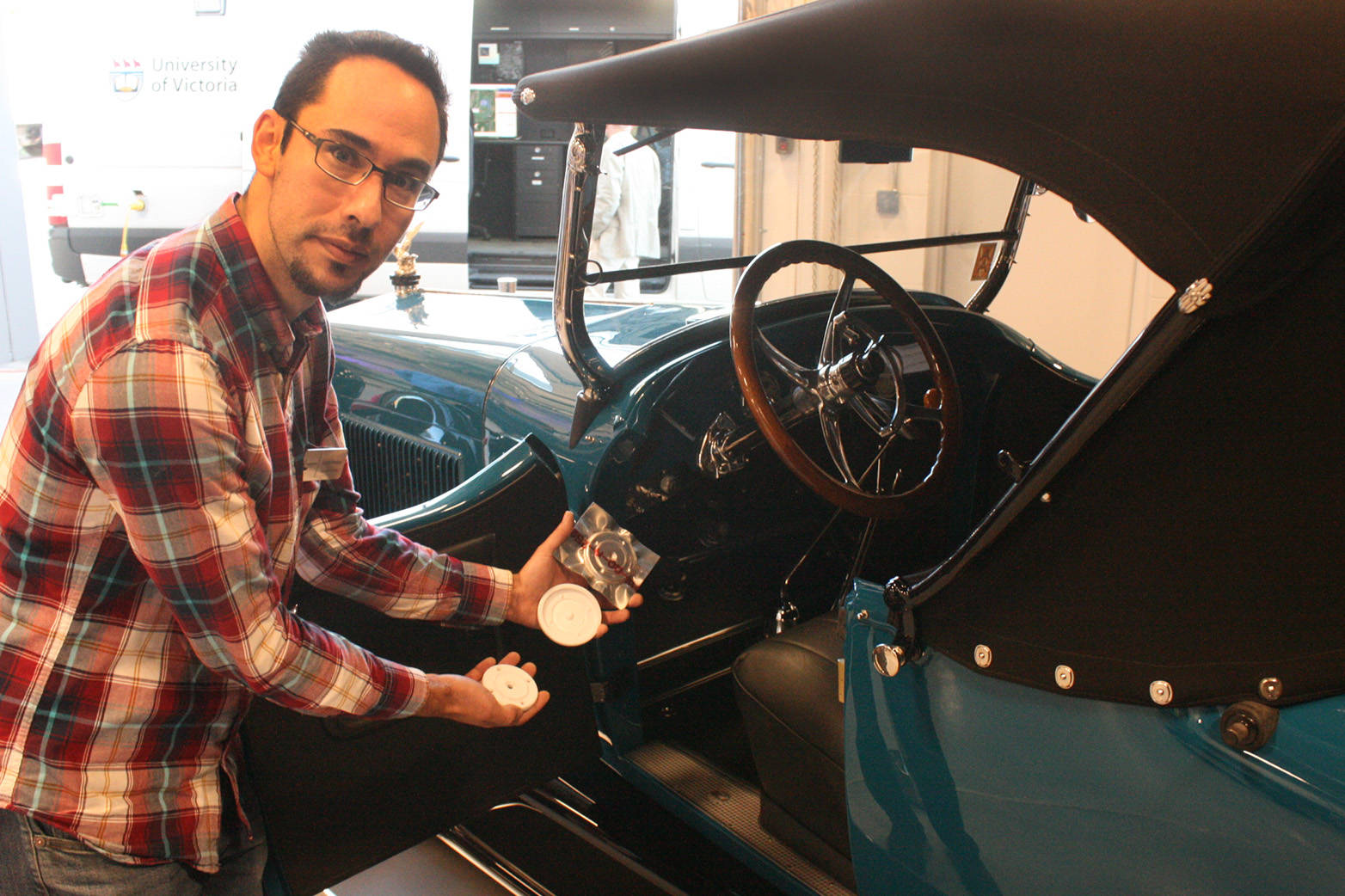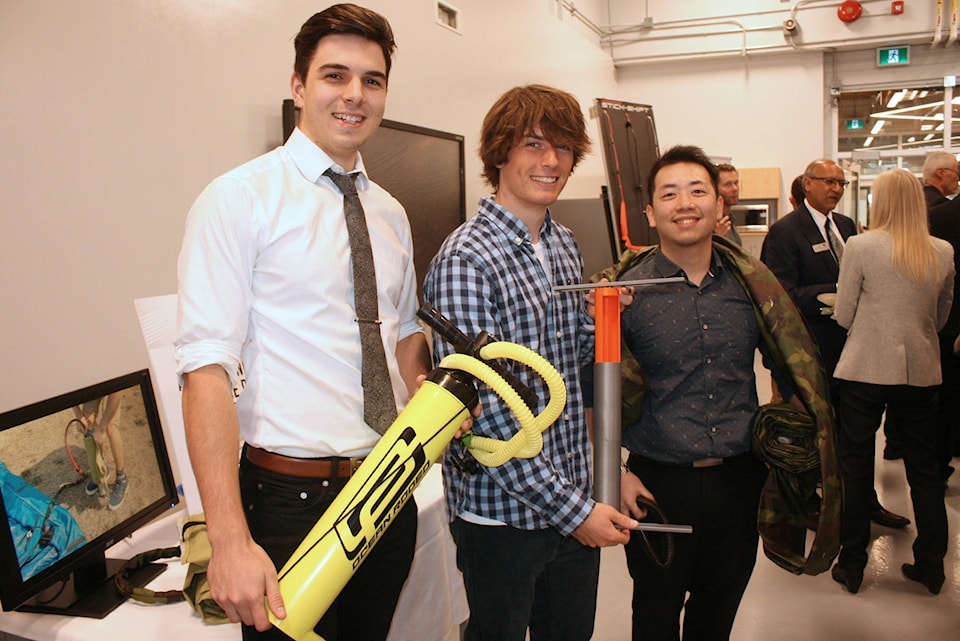In a room of cutting-edge technology it was the shiny-blue 1922 Wills Sainte Claire roadster that stood out at Tuesday’s launch of the new Babcock Canada Interaction Lab.
The Interaction Lab is housed within the Camosun Innovates department, named for Babcock Canada, which donated $800,000 into Camosun College’s TRADEMark of Excellence campaign, which has raised $7.5 million.
“It brings two big 3D printers, a 3D printer that can weave carbon fibre with nylon, 3D scanners, manufacturing and more under one roof,” said Sergio Asebey, research technologist with Camosun Innovates.
Asebey was part of the team that helped Pete Seward, owner of the Saint Claire, when Seward’s search for replacement floorboard bezels to go in his 1922 roadster came up short.
“We were able to use 3D scanners on the [failing] parts of the car,” Asebey said.
They then used a 3D printer to create plastic models of the parts and used those to press aluminum mouldings that replaced the floorboard bezels, Asebey explained.
It’s the type of technology that’s opening new doors in Victoria, and in Canada.
Camosun Innovates is an entity within Camosun, with its own staff and infrastructure, that is accessible to local businesses and ties into Camosun students.
Saanich’s Ocean Rodeo, which has designed and manufactured kites for kiteboarding since the sport first started more than two decades ago, but is still a local business, has relied on Camosun students to make research and development a realistic option.
This year, a trio of graduating mechanical engineering students – Liam McLean, Aaron Khor and Reece Myerscough – took on the challenge to create a travel-size pump that could inflate Ocean Rodeo’s kites (they are like two sails sewn together, and inflate for stability and buoyancy in the water).
“Kiteboarding is a destination sport, people travel the world to visit great spots for it,” Myerscough said. “We took on the challenge of creating a pump that could travel light, that people can use when hiking into remote beaches.”
The trio came up with a small eight-PSI winch pump that takes up as less room than a reusable water bottle. To fill a 140-PSI kite they also instituted an intermediary airbag that they fill up first, and then use the winch pump to force air into the kite. The patented winch pump also converts into a traditional pump, and the result is a combination that can fill a kite in a matter of minutes. (The additional airbag can be rigged into a beach chair.)
“We’ve been very successful in using grants for research and development, and partnerships that rely on local colleges or universities which for us has been Camosun,” said John Zimmerman, general manager at Ocean Rodeo. “We rely on grants from NSERC [Natural Sciences and Engineering Research Council], we have to have results within 12 to 18 months or we can’t invest in the R&D.”
The Babcock money is Camosun’s most recent investment from the private sector.
“It’s a game-changer for applied learning, interdisciplinary research and innovation that will drive forward regional economic development with our industry partners,” said Dr. Tim Walzak, director of Camosun Innovates.
Camosun Innovates receives funding from national bodies including the Natural Sciences and Engineering Research Council (NSERC), Western Economic Diversification Canada (WED) and the Canada Foundation for Innovation.

